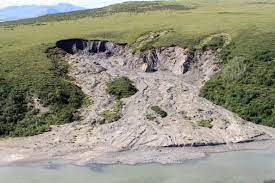The Philippines has an abundant history of earthquakes but while there have been catastrophic earthquakes, the majority have a magnitude of 4-5. There are on average 982 earthquakes a year in the Philippines, but many cannot be felt.
According to the Iris monitoring website, the most recent earthquake in the Philippines was on September 4th, 2022 with a magnitude of 4.5. The image below is the waveform from the September 4th earthquake taken by the Global Seismograph Network from Po Shan, Hong Kong.
The P wave formation in the reading tells us that the P waves travel faster and the station can therefore pick up the waves faster. What the reading mostly picked up is the surface waves. It is likely that these surface waves were picked up in the form of ocean waves. The particles of the median in this graph move up and down. When I listened to the waveform graph I could hear the up and down shaking movement, which is verified by the graph.
Like many earthquakes, scientists can hypothesize that it comes from a fault of some sort. After studies of the faults around the Philippines, it was determined that the fault most related to the earthquakes is the "Central Philippine Fault Zone consisting of the Guinayangan, Masbate, and Central Leyte faults". The Philippine Fault is a strike-slip fault which tells us its movement is horizontal. This type of fault is dangerous because it can cause buildings to fall apart, and roads to break due to shearing stress.
The Philippines have put together what they call a more "reactive" approach rather than a proactive approach. They do not spend as much time trying to prevent earthquakes as they do dealing with the damage after it happens. This has caused many financial burdens among the citizens and government in the Philippines.
A few proactive disaster precautions the Philippines has taken is having disaster management centers that provide aid, rescue, and information. As part of this program, they conduct research and help teach people what to do in case of an emergency disaster such as an earthquake.
References:
https://www.adrc.asia/management/PHL/Philippines_Disaster_Plans.html#:~:text=The%20Philippine%20disaster%20management%20program,information%2C%20and%20research%20and%20development.
https://openknowledge.worldbank.org/handle/10986/8748#:~:text=The%20Philippine%20institutional%20arrangements%20and,avoid%20the%20creation%20of%20disaster
https://www.independent.co.uk/news/world/asia/philippines-earthquake-today-masbate-cataingan-death-toll-a9675236.html
https://www.forbes.com/sites/trevornace/2019/04/22/earthquake-shakes-philippines-leaving-five-dead-north-of-manila/?sh=4aedf82861f1
http://ds.iris.edu/ds/nodes/dmc/tools/event/11594811
https://en.wikipedia.org/wiki/Philippine_Fault_System#:~:text=and%203.8%20Ma.-,Earthquakes,islands%20of%20Bondoc%20to%20Leyte.
https://www.phivolcs.dost.gov.ph/index.php/2-uncategorised/635-philippine-fault-zone-maps#:~:text=The%201%2C200%2Dkm%2Dlong%20Philippine,northwestern%20Luzon%20to%20southeastern%20Mindanao.




Hello Tessa!
ReplyDeleteKnowing that the Philippines is part of the pacific islanders group I did assume that earthquakes do take place, but I am surprised to learn that the island itself does not experience any catastrophic hazards that are harmful considering the number of earthquakes the island and the people experience. Thank you for the good read. Cheers!